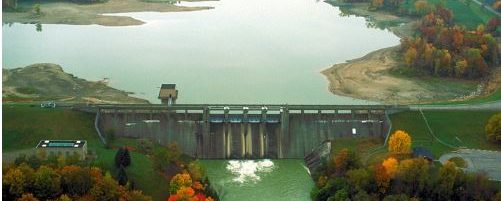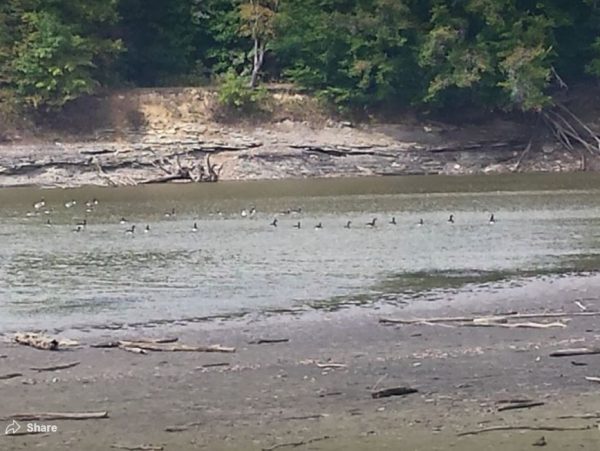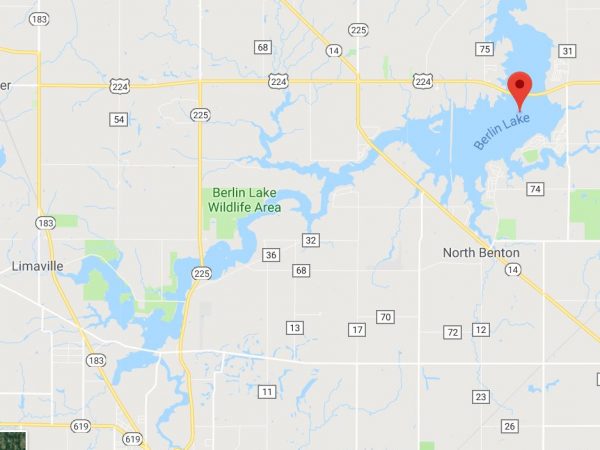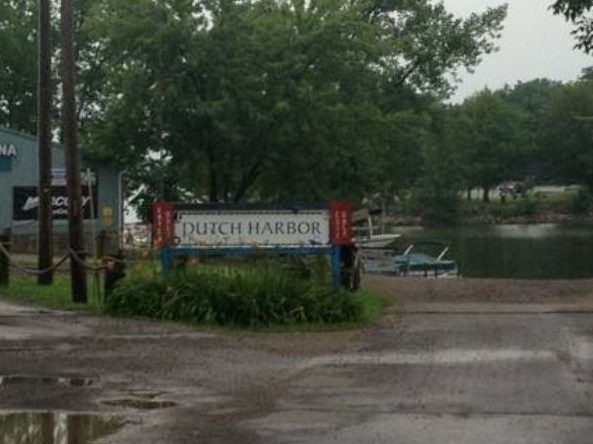

Some History of Berlin Lake
The Large Impact on North Benton & Deerfield
Before the Lake
Mahoning River and Mill Creek were great playgrounds. Mill Creek was beneath a high cliff on the south, with only a few spots more that were more than 2 feet deep. It meandered through my grandfather’s farm and provided great entertainment. We found fossils, and arrowheads, and in one outcropping of limestone, there were scratch marks from the last glacier. Crayfish, catfish, and “water dogs” (Hellbender Salamander) were in the water. A small coal outcropping was located about halfway up the cliff. My father sometimes mined some coal from it, although it was not of good quality. The woods had mature hard maple trees that we tapped in the spring for syrup. The woods supplied ample firewood for the maple syrup camp and to heat my grandfather’s house. The cliff was quite steep, and I remember hating to go down the hill on our pony. One chore was bringing in the cattle at milking time, as they sometimes grazed on the other side of Mill Creek, where there was flat pasture land and ample grass. Mahoning River was deeper and considerably larger than Mill Creek. It had an area on the Kirkbride property just North of us that gave us an old swimming hole. A huge boulder in the middle of the swimming area protruded above the water, about 4 feet deep, giving us a diving platform. Our normal ritual after chores in the summer was to ride our bikes to the river, sometimes with a bathing suit and sometimes without, for a cooling dip in the old swimming pool. We normally took a cake of soap for a well-needed bath after a day of making hay or other farm activity. The river was frequently polluted by chemicals dumped into it upstream but that did not stop us.
Dam Construction
Michael Kirwin who represented the Youngstown area in Congress, obtained funding for the Berlin Dam. It is a 96-foot dam, completed in 1943, for flood control and a reliable water supply for the Youngstown Steel Mills. Lake Milton was an aging lake downstream on the Mahoning River that was used as a reserve water source for the mills and was not entirely adequate. It was also used for recreation, so lowering the level to supply the steel mills with water was unpopular. The construction of Berlin Lake caused great disruption to the community and, in some cases, caused huge uncompensated hardship to those with flooded properties. The Corp of Engineers was obligated to buy the land at a fair price, but their Initial offers were very low. Then, after a few weeks, those insufficient offers were arbitrarily cut in half because they didn’t have that much money to spend. Most affected landowners found it necessary to file lawsuits in federal court in Cleveland to get reasonably acceptable settlements.
Community Impact
McEldowney’s lived across Mill Creek from Dutch’s Harbor. An old iron bridge sat at the bottom of a rather steep access road and crossed the stream. Years earlier, the Lazarus grist mill was located just East of the bridge. McEldowney’s unflooded land is now part of the park. In the winter of 1942, before work on bridges were completed and logs that had been cleared from the areas to be flooded were hauled away, gates at the dam became jammed with debris. Heavy spring rains filled the dam. The McEldowneys were isolated. McEdowneys acquired a rowboat to get across the lake, as they drove a school bus and had to get students to school. This worked for a while, but the lake froze, and they had to chop a path through the ice for their boat. Soon, the ice froze thick enough so they could walk across for a few weeks. When the lake was deliberately filled the following year, they still had not received a settlement on their farm and were isolated again. They not only had issues commuting across the lake, but they also had to build a bridge to get to the barn and sometimes had a few inches of water on their living room floor. It was very difficult for them. They could not move without funds from a settlement for their farm.
During the first flood in 1941, ice froze to about 10 inches thick, and the surface was smooth. My father and I skated to the Route 224 bridge and the railroad trestle and back. The ice was clear so that we could see fish frozen a few inches below the surface. In some cases, one fish was frozen in place, and another below was frozen in place while attempting to eat the first one. While the dam was being built, construction workers and woodsmen were brought to the area.
Living with the construction workers was interesting, as they recalled interesting experiences. One of the men operated the tall crane and had been in a serious cave-in that buried him and the crane’s body on an earlier job. He had missed work a year or so from his injuries, so this was his first job after the accident. The crews from West Virginia liked to tell tall tales about their state. In one discussion, they noted that back home, three ears grew on every stalk, and they got 40 bushels per acre. Our neighbor noted that he got 40 bushels of corn per acre with only one ear of corn per stalk. Another favorite was the cucumbers that needed steel runners to keep them from wearing out from growing so fast.
Our Impact
In our case, about 35 acres were taken on an easement, leaving the farm too small to be viable. Albert began working as a carpenter, living away from home during the week during the early war years, first building barracks as Army bases in Pennsylvania. Near the war’s end, he worked at the Taylorcraft Aircraft Company, boxing parts they were manufacturing for shipment to the major aircraft assembly plants. After the war, he did some sub-contract carpentry work, such as building porches, roofing barns, and modifying homes.
Berlin Lake Today
The lake quickly became a recreation area, attracting motor boats from the area. The marina at the foot of Hartzell Road was designated as an accepted commercial site as the government attempted to control the number of docks on the lake. (The government always likes monopolies.) Berlin Lake is now an established recreation area with boating, fishing, cottages, and camping. The Youngstown Steel Mills went out of business in the late 1960s and no longer needed the water, but the lake’s level is lowered for its function for flood control. The lake has now matured and is full of boats, but it still has shores that are a muddy mess in the winter when the water level is dropped, giving it capacity for spring floods.


Berlin Lake at low level
Since Berlin Lake is used for flood control, levels are lowered in the fall in preparation for spring floods. The shoreline can be quite muddy and messy

Map of Berlin Lake
Berlin Lake from the dam, just a few miles north of the 224 bridge, almost to Alliance.

A water Dog or Hellbender
Here is an image of a “water dog” similar to those we found in Mill Creek before the dam was built

Dutch Harbor
Dutch Harbor is at the end of Hartzell Road. The old iron bridge was originally north of the boat ramp. McEldowney’s house was across the lake. Years ago, Lazarus’s Mill was just to the right on Mill Creek.